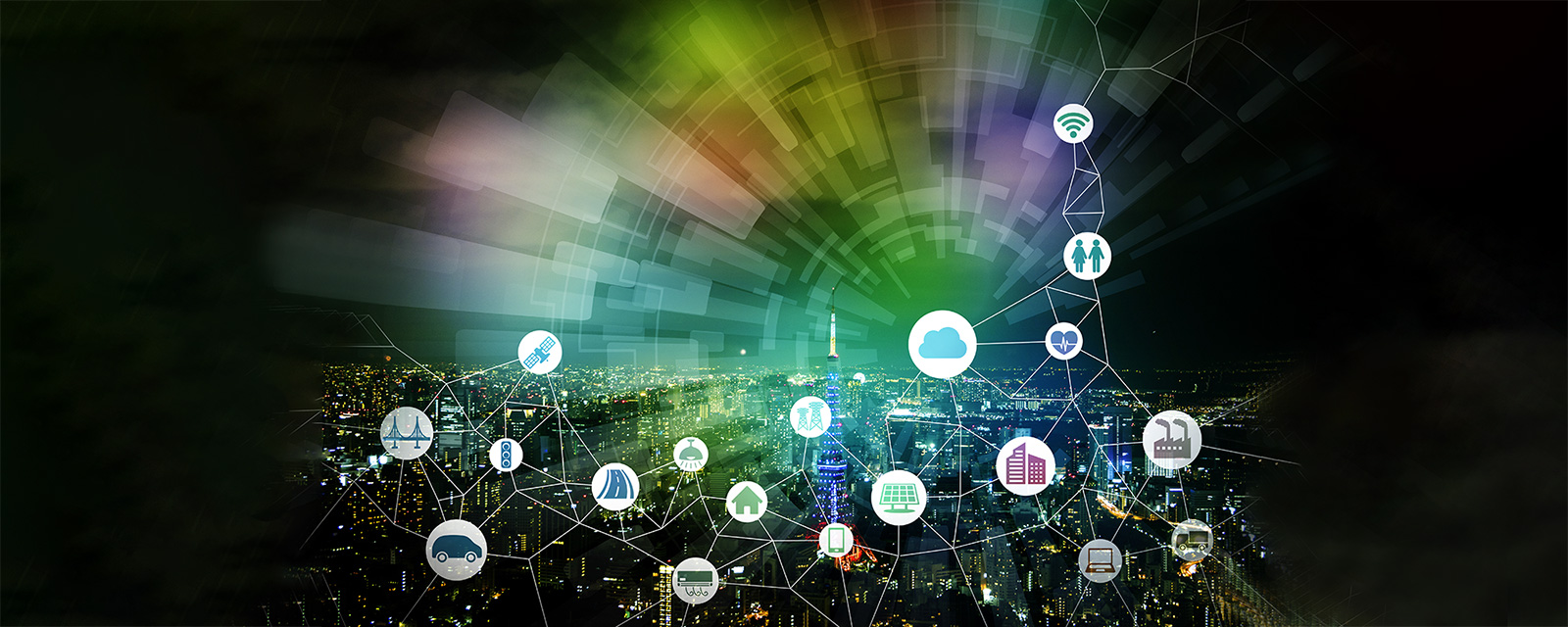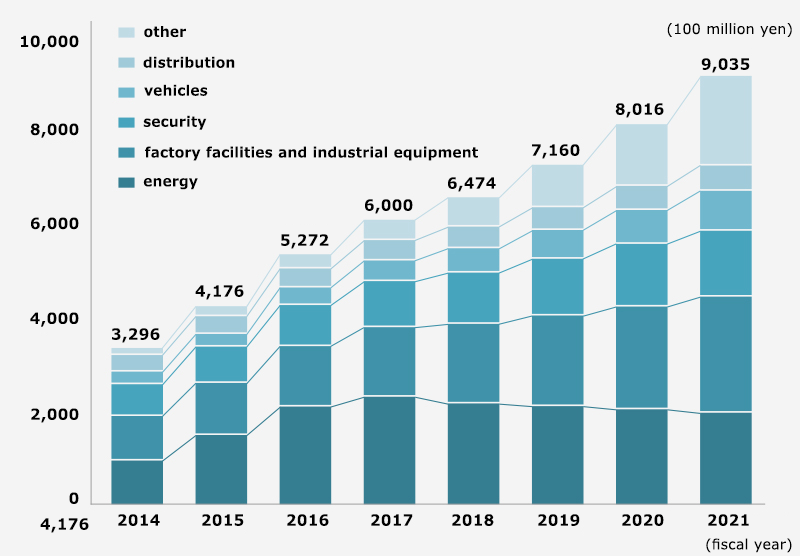
Will Japan Fall Behind in IoT?
IoT—the Internet of Things. Seldom does a day go by without these letters appearing in various forms of media. As the name implies, IoT refers to systems and services that connect all manner of physical objects over the internet for the purpose of communicating with or controlling them. Connected objects include things like machine tools, construction machinery, and other industrial equipment, as well as medical instruments, measuring equipment and sensors used in social infrastructure, and more. What makes it possible to automatically identify and control these things over the internet—and furthermore, to monitor and control them remotely—is IoT.
The adoption of IoT is also progressing in Japan, particularly in the manufacturing industry, and it is now common to hear of manufacturers using IoT in their daily operations. However, although businesses in Japan are now finally able to discuss IoT with a concrete image of what it can do, many U.S. businesses transcending the boundaries of industries are already engaging in joint development projects and introducing one innovative system after another, while in Germany, government-supported efforts are aggressively underway to digitalize factories and establish new industrial standards. In today’s global IoT market, what must Japanese industry do to be able to compete shoulder to shoulder with Europe and the U.S.?
M2M: The foundation of IoT
In order to enable various kinds of devices and machinery to autonomously communicate and control operations, they must be equipped with communication functions. The function that allows these objects to communicate is a system called M2M (machine to machine), without which IoT would not be possible.
To get a picture of the future of IoT technology in Japan, let us focus on M2M, which is arguably the foundation of IoT. Even just in terms of the Japanese market, M2M is predicted to nearly double in scale between 2015 and 2020. Looking at the breakdown by industry, currently the energy sector is adopting M2M at a rate on par with factory facilities and industrial equipment.
M2M market scale predictions

The M2M market in the energy sector will start to shrink from 2017, when the adoption of smart meters is expected to taper off, but the M2M market overall will continue to grow steadily owing to its expansion in other fields. Recently in particular, the agricultural industry has found new methods of using M2M, such as for monitoring the interiors of plastic greenhouses, and the integration of sensors in household electric appliances and digital devices has progressed as well. Moreover, there will likely also be a greater need for systems for communicating with the devices that people use directly, such as medical equipment and health management devices. The expectation is that the growth of fields incorporating M2M will lead the entire market to expand, and the IoT services deployed on those systems will become more robust.
Expectations for IoT services developed in Japan
IoT makes overall system management more efficient through three steps—acquiring and collecting data through connected objects, accumulating and processing that data, and finally, using the data. With M2M as their foundation, IoT services are expanding and will likely become highly diversified.
Looking at the ways that IoT has been utilized in Japan thus far, its applications include making vending machine inventories easier to manage, detecting the usage of business equipment and identifying defective devices, and managing the operation of construction equipment and assisting with automation, none of which has gone beyond the management of individual devices at individual companies. However, in terms of future prospects, we may well see IoT expand into a variety of related industries in ways that also involve people and services. These could include, for instance, applications for calculating insurance premiums based on how drivers tend to behave when operating their vehicles, or computing the purchase price of used vehicles given such factors as the vehicle’s mileage or battery charge history.
Cross-industry fusions will be the key for Japanese-developed IoT
For IoT to advance even further, additional development of many kinds of technologies—such as high-performance sensors, large-capacity high-speed networks, edge computing, real-time control, information security, big data, and artificial intelligence—will be essential. However, if one considers the numbers and range of things to be connected with IoT, as well as time required and the variety and vastness of IoT’s features, there is a limit to how much progress companies and institutions can make developing the necessary technologies on their own. The shortest path forward is to pursue efforts to pool together and coordinate the techniques and knowledge possessed by sensor and equipment manufacturers, end product manufacturers, system integrators, telecommunications carriers, research agencies and other such entities, so that development can be accelerated and superior systems and services can be produced.
Europe and the U.S. are making progress with developing new IoT technologies through partnerships which overcome industry barriers and government-backed projects, yet in Japan, this kind of horizontal integration is lagging behind. Japan is home to manufacturers of transport vehicles (automobiles), precision equipment, industrial equipment, control devices, sensors and other technologies who have leading positions in the global market, as well as infrastructure and energy-related manufacturers boasting advanced technical capabilities. These manufacturers possess accumulated data relating to design, production, and operation and maintenance, while at the same time employing many engineers who excel at handling equipment and are deeply knowledgeable about production and maintenance. Implementing IoT requires know-how for working with equipment, device control technology, and sensor development techniques. In other words, by concentrating the high technological development capabilities that Japan already possesses, it is fully possible to make Japanese-developed IoT a reality. For Japan to survive the global IoT competition as well, it must proceed as rapidly as possible with efforts that cross over the thresholds of industry.